10 of The World's Lasts
Nathan Johnson
Published
09/16/2015
it might all be over after these people
- List View
- Player View
- Grid View
Advertisement
-
1.
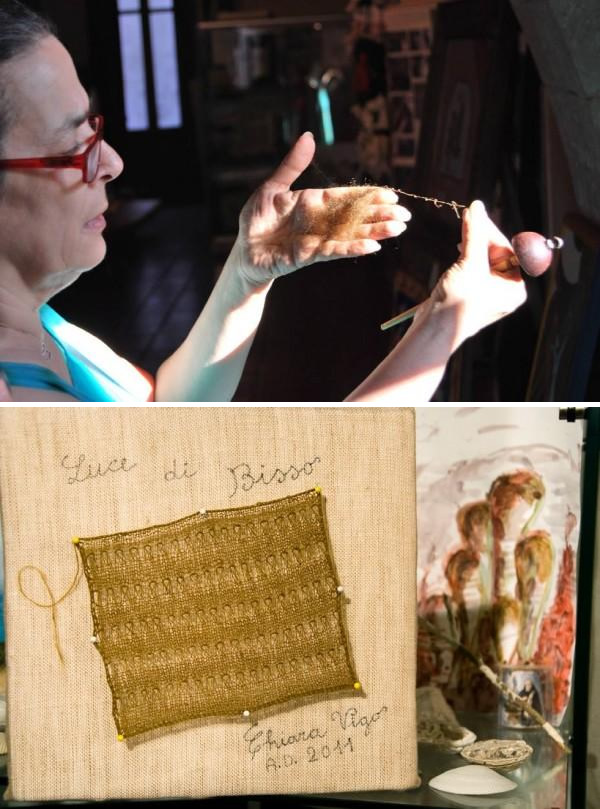 The ancient Italian art of spinning "sea silk" is all but lost, save for one woman who still knows how to produce this incredibly rare, almost magical fabric. While modern silk is spun from silkworms, Chiara Vigo can harvest the saliva of a rare variety of clam and spin it into a shiny, gold-like material called byssus. It is believed to be the finest fabric known to Egypt, Greece, and Rome. If treated properly with lemon juice and spices, the remarkable material shines when exposed to the sun. It is also incredibly light, and the wearer cannot even feel it touching the skin. It is said to be as thin as a spider web, and resistant to water, acids, and alcohol. Vigo gathers the raw material required to weave the cloth every spring. She goes out diving early in the morning to harvest the solidified saliva of a large clam known as a pinna nobilis, an endangered fan-shaped species of mollusk that is native to the Mediterranean Sea. Vigo has mastered a special cutting technique that allows her to take the secreted material without killing the rare creature. After 300-400 dives, she can gather about 200 grams of material. Once she has the material ready, she starts the weaving process at her studio, the Museum of Byssus, on the Sardinian island of Sant'Antioco. She begins by leaving it to soak in a mixture of seaweed. When it's dry, she combs it with a wool card and twists the fine filaments together with a spindle made of oleander to form the gilded thread. She spins the yarn several times to strengthen it, so it can be used in the loom and woven into fabric that lasts for thousands of years. It is immune to destruction by moths or fire.
The ancient Italian art of spinning "sea silk" is all but lost, save for one woman who still knows how to produce this incredibly rare, almost magical fabric. While modern silk is spun from silkworms, Chiara Vigo can harvest the saliva of a rare variety of clam and spin it into a shiny, gold-like material called byssus. It is believed to be the finest fabric known to Egypt, Greece, and Rome. If treated properly with lemon juice and spices, the remarkable material shines when exposed to the sun. It is also incredibly light, and the wearer cannot even feel it touching the skin. It is said to be as thin as a spider web, and resistant to water, acids, and alcohol. Vigo gathers the raw material required to weave the cloth every spring. She goes out diving early in the morning to harvest the solidified saliva of a large clam known as a pinna nobilis, an endangered fan-shaped species of mollusk that is native to the Mediterranean Sea. Vigo has mastered a special cutting technique that allows her to take the secreted material without killing the rare creature. After 300-400 dives, she can gather about 200 grams of material. Once she has the material ready, she starts the weaving process at her studio, the Museum of Byssus, on the Sardinian island of Sant'Antioco. She begins by leaving it to soak in a mixture of seaweed. When it's dry, she combs it with a wool card and twists the fine filaments together with a spindle made of oleander to form the gilded thread. She spins the yarn several times to strengthen it, so it can be used in the loom and woven into fabric that lasts for thousands of years. It is immune to destruction by moths or fire. -
2.
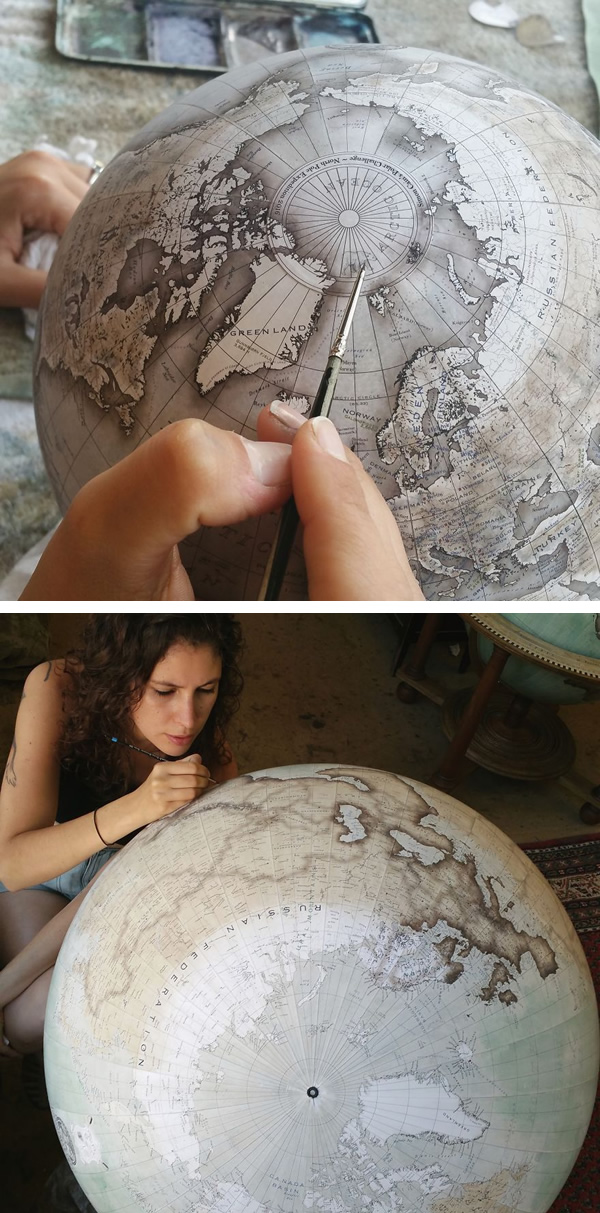 In the modern age, with the advent of GPS in addition to the abundance of mass-produced globes and maps, the art of globe-making has seemingly disappeared. Only two workshops in the world still make modern, handcrafted globes—one of them is Bellerby & Co. Globemakers, a studio based in London, England. The studio began in 2008 when Peter Bellerby struggled to find a quality globe as a gift for his father on his 80th birthday. Faced with a choice between cheaply made modern globes or fragile, expensive antique reproductions, Peter decided to try and make his own. The process turned out to be more complicated and costly than he imagined. After two years of trying to create the perfect globe, Peter turned this newfound passion into a business. Bellerby now has a small team of dedicated globemakers constructing high-quality, handmade, terrestrial and celestial globes. With bespoke cartography, each globe is made to order and is essentially one-of-a-kind. From the various bases to the painting to the mapmaking, each piece is expertly crafted in-house using both traditional and modern techniques. Before you get too excited, note that prices start at $1,500, and it takes each new team member at least six months of learning how to make a globe.
In the modern age, with the advent of GPS in addition to the abundance of mass-produced globes and maps, the art of globe-making has seemingly disappeared. Only two workshops in the world still make modern, handcrafted globes—one of them is Bellerby & Co. Globemakers, a studio based in London, England. The studio began in 2008 when Peter Bellerby struggled to find a quality globe as a gift for his father on his 80th birthday. Faced with a choice between cheaply made modern globes or fragile, expensive antique reproductions, Peter decided to try and make his own. The process turned out to be more complicated and costly than he imagined. After two years of trying to create the perfect globe, Peter turned this newfound passion into a business. Bellerby now has a small team of dedicated globemakers constructing high-quality, handmade, terrestrial and celestial globes. With bespoke cartography, each globe is made to order and is essentially one-of-a-kind. From the various bases to the painting to the mapmaking, each piece is expertly crafted in-house using both traditional and modern techniques. Before you get too excited, note that prices start at $1,500, and it takes each new team member at least six months of learning how to make a globe. -
3.
 In the age of internet technology, digital printing, and 24-hour news channels, headlines have never traveled faster. But in a resilient and elegant corner of India, the traditions of generations past are being kept alive on the world's last hand-written daily newspaper. At 324 Triplicane High Road in Chennai, the staff of the Urdu language evening paper The Musalman literally write the headlines every day. It takes three hours for the three katibs—specialist calligraphers and reporters—to pen a page, before it is turned into a negative, printed, folded and sold to its 21,000 subscribers. Late-breaking news stories previously meant that whole pages needed to be rewritten, but a blank panel in the corner of the front page now caters to that possibility. Mistakes, on the other hand, can lead to a whole page being scrapped and rewritten.
In the age of internet technology, digital printing, and 24-hour news channels, headlines have never traveled faster. But in a resilient and elegant corner of India, the traditions of generations past are being kept alive on the world's last hand-written daily newspaper. At 324 Triplicane High Road in Chennai, the staff of the Urdu language evening paper The Musalman literally write the headlines every day. It takes three hours for the three katibs—specialist calligraphers and reporters—to pen a page, before it is turned into a negative, printed, folded and sold to its 21,000 subscribers. Late-breaking news stories previously meant that whole pages needed to be rewritten, but a blank panel in the corner of the front page now caters to that possibility. Mistakes, on the other hand, can lead to a whole page being scrapped and rewritten. -
4.
 Sudan, the last male northern white rhino on Earth, is guarded against harm 24 hours a day by a special team at Ol Pejeta Conservancy in Kenya. Sudan, 42, has an amazing life story. Captured as a young rhino in the wild, he spent 35 years in captivity at a zoo in the Czech Republic before he was brought to Ol Pejeta to live out his days in his natural environment. Sadly, Sudan is getting older. And once he is gone, there's no hope left for the northern white subspecies of rhino, despite attempts to get these rare animals to breed. Rhinos everywhere are being slaughtered for their horns because of a stubborn belief that their horns have medicinal properties. Sudan's ivory horn has already been removed to deter ruthless poachers. Despite this, Simor Irungu, one of the rangers who guards him, says the team regularly risk their lives to keep him safe.
Sudan, the last male northern white rhino on Earth, is guarded against harm 24 hours a day by a special team at Ol Pejeta Conservancy in Kenya. Sudan, 42, has an amazing life story. Captured as a young rhino in the wild, he spent 35 years in captivity at a zoo in the Czech Republic before he was brought to Ol Pejeta to live out his days in his natural environment. Sadly, Sudan is getting older. And once he is gone, there's no hope left for the northern white subspecies of rhino, despite attempts to get these rare animals to breed. Rhinos everywhere are being slaughtered for their horns because of a stubborn belief that their horns have medicinal properties. Sudan's ivory horn has already been removed to deter ruthless poachers. Despite this, Simor Irungu, one of the rangers who guards him, says the team regularly risk their lives to keep him safe. -
5.
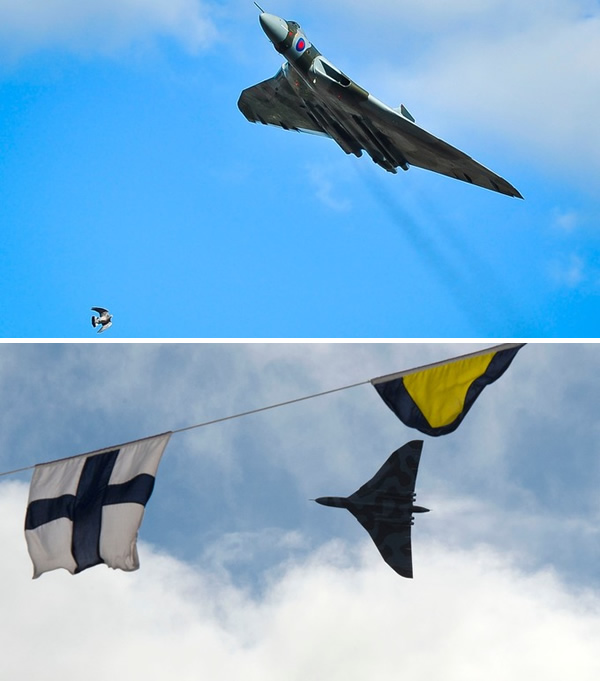 The world's last airworthy Vulcan bomber is currently appearing over London and Essex as part of a farewell tour. The iconic Cold War jet will be grounded at the end of 2015 for safety reasons. The aircraft has made regular appearances at airshows all over Britain in recent years after supporters raised millions of pounds to keep it flying. The organization that operates the Vulcan announced two nationwide tours. The aircraft flew over Hendon in north London and Southend in Essex in June. An additional Vulcan bomber is preserved in the RAF Museum at Hendon, and another has been restored by volunteers at Southend Airport.
The world's last airworthy Vulcan bomber is currently appearing over London and Essex as part of a farewell tour. The iconic Cold War jet will be grounded at the end of 2015 for safety reasons. The aircraft has made regular appearances at airshows all over Britain in recent years after supporters raised millions of pounds to keep it flying. The organization that operates the Vulcan announced two nationwide tours. The aircraft flew over Hendon in north London and Southend in Essex in June. An additional Vulcan bomber is preserved in the RAF Museum at Hendon, and another has been restored by volunteers at Southend Airport. -
6.
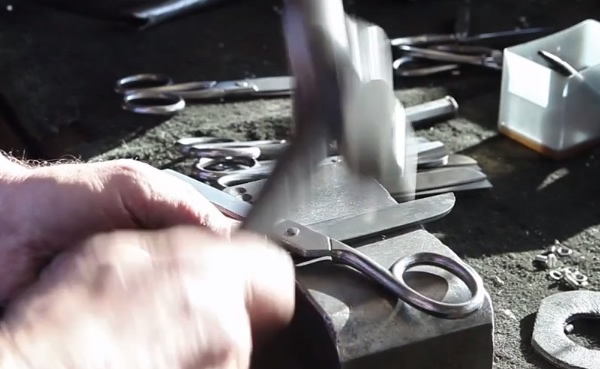 Ernest Wright and Son Limited may be the last factory in the world still making scissors by hand. In 2014, it looked as though they might close, but a video by photographer Shaun Bloodworth showing how the scissors are made went viral. Orders immediately went up, with a flood of requests from the U.S. Cliff Denton is a "putter" for Ernest Wright & Sons. He literally puts together scissors with his hands. Watching him work is mesmerizing and satisfying to see—it's basically art.
Ernest Wright and Son Limited may be the last factory in the world still making scissors by hand. In 2014, it looked as though they might close, but a video by photographer Shaun Bloodworth showing how the scissors are made went viral. Orders immediately went up, with a flood of requests from the U.S. Cliff Denton is a "putter" for Ernest Wright & Sons. He literally puts together scissors with his hands. Watching him work is mesmerizing and satisfying to see—it's basically art. -
7.
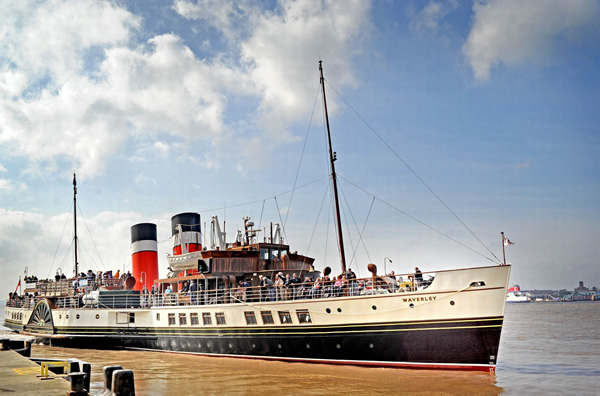 PS Waverley is the last seagoing passenger-carrying paddle steamer in the world. Built in 1946, she sailed from Craigendoran on the Firth of Clyde to Arrochar on Loch Long until 1973. When the ship was retired, it was bought by the Paddle Steamer Preservation Society for £1. The society restored it to its former glory and it was featured in Sherlock Holmes, starring Robert Downey Jr., in 2011. Since 2003, the Waverley has been listed in the National Historic Fleet by National Historic Ships UK as "a vessel of pre-eminent importance."
PS Waverley is the last seagoing passenger-carrying paddle steamer in the world. Built in 1946, she sailed from Craigendoran on the Firth of Clyde to Arrochar on Loch Long until 1973. When the ship was retired, it was bought by the Paddle Steamer Preservation Society for £1. The society restored it to its former glory and it was featured in Sherlock Holmes, starring Robert Downey Jr., in 2011. Since 2003, the Waverley has been listed in the National Historic Fleet by National Historic Ships UK as "a vessel of pre-eminent importance." -
8.
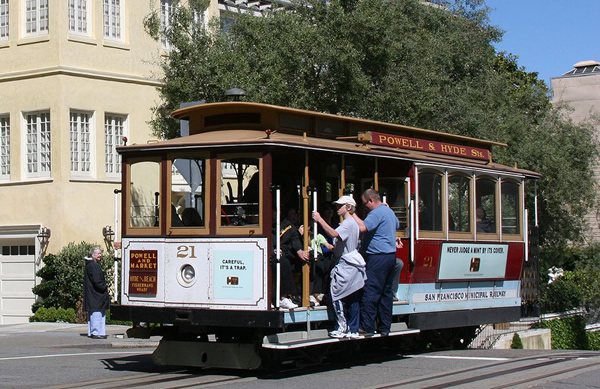 San Francisco's cable cars are part of the last manually operated cable car system in the world. An icon of the city, the cable cars form part of the intermodal urban transport network operated by the San Francisco Municipal Railway. Of the twenty-three lines established between 1873 and 1890, just three remain—two routes from downtown near Union Square to Fisherman's Wharf, and a third route along California Street. While the cars are used to a certain extent by commuters, the vast majority of their 7 million annual passengers are tourists. They are among the most significant tourist attractions in the city, along with Alcatraz Island, the Golden Gate Bridge, and Fisherman's Wharf. The cable cars are listed on the National Register of Historic Places.
San Francisco's cable cars are part of the last manually operated cable car system in the world. An icon of the city, the cable cars form part of the intermodal urban transport network operated by the San Francisco Municipal Railway. Of the twenty-three lines established between 1873 and 1890, just three remain—two routes from downtown near Union Square to Fisherman's Wharf, and a third route along California Street. While the cars are used to a certain extent by commuters, the vast majority of their 7 million annual passengers are tourists. They are among the most significant tourist attractions in the city, along with Alcatraz Island, the Golden Gate Bridge, and Fisherman's Wharf. The cable cars are listed on the National Register of Historic Places. -
9.
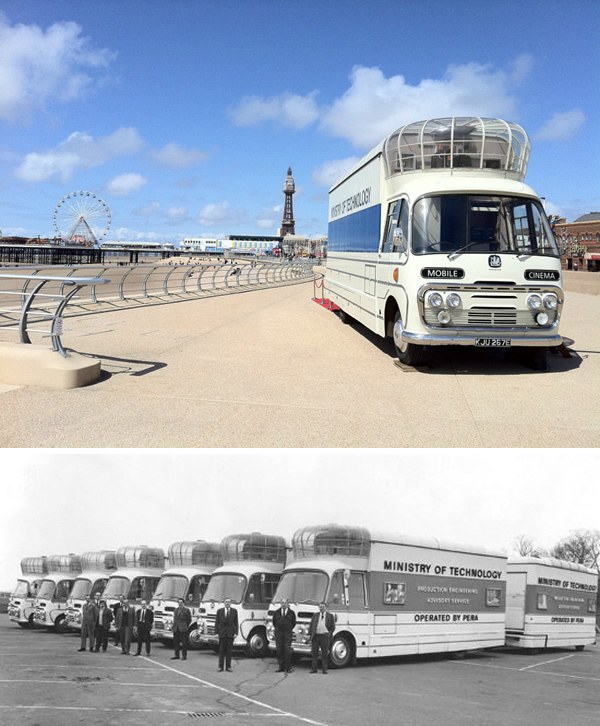 Even the most romantic bus to camper conversion pales in comparison with the Bedford SB3 Mobile Cinema. The streamlined British bus/theater is the only one remaining out of seven built. Created by England's Ministry of Technology in the late 1960s, this bus and its six brothers toured the UK to educate engineers, industrial designers, and others on modern production methods. The "cinemas" fanned out to manufacturing facilities in cities and towns across the country, making attendance at these educational tours more convenient. Each cinema was also outfitted with a matching trailer. The trailers held detailed presentations and literature on the subject of the films being shown. After being sold by the government in 1974, all but one has gone missing. Found in sorry shape when its current owners purchased it, the trailer has undergone an impressive restoration, receiving an updated drivetrain and modern heating and air conditioning systems. It was recently put up for sale on eBay and sold in May 2015.
Even the most romantic bus to camper conversion pales in comparison with the Bedford SB3 Mobile Cinema. The streamlined British bus/theater is the only one remaining out of seven built. Created by England's Ministry of Technology in the late 1960s, this bus and its six brothers toured the UK to educate engineers, industrial designers, and others on modern production methods. The "cinemas" fanned out to manufacturing facilities in cities and towns across the country, making attendance at these educational tours more convenient. Each cinema was also outfitted with a matching trailer. The trailers held detailed presentations and literature on the subject of the films being shown. After being sold by the government in 1974, all but one has gone missing. Found in sorry shape when its current owners purchased it, the trailer has undergone an impressive restoration, receiving an updated drivetrain and modern heating and air conditioning systems. It was recently put up for sale on eBay and sold in May 2015. -
10.
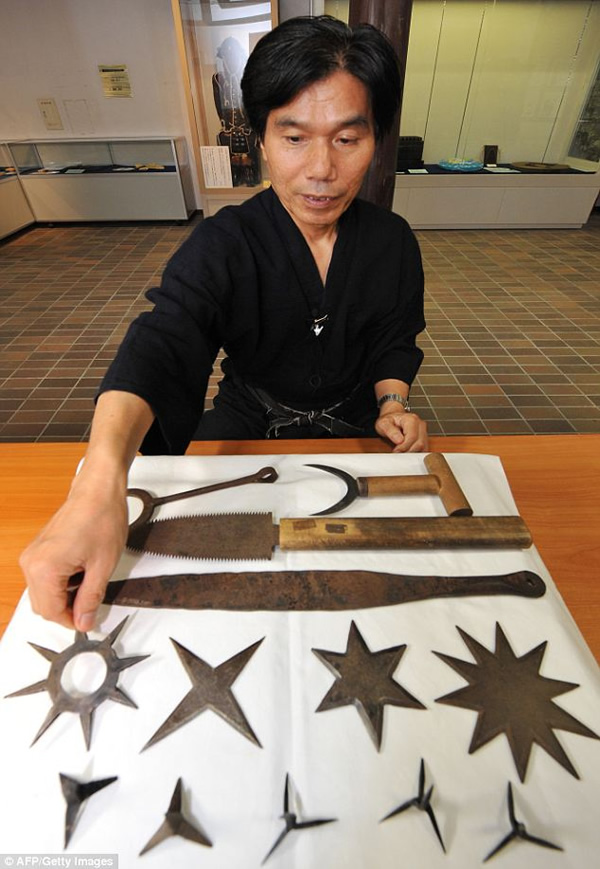 Jinichi Kawakami, a 63-year old engineer, is probably Japan's last true-blue ninja. He's the 21st head of the Ban clan, a family that traces its ninja roots back 500 years. And according to him, there will never be a 22nd. The 63-year-old Ninja says he is the last living person to have learned all of the skills used by the spies and assassins of feudal Japan. He is trained to hear a needle drop in the next room, to disappear in a cloud of smoke or to cut a victim's throat from 20 paces with nothing more than a two-inch "death star." He gave up engineering to teach ninjutsu ten years ago, despite the challenges of being a ninja master in the modern age. But Kawakami has decided to let the art die with him because ninjas "just don't fit with (the) modern day." He adds, "We can't try out murder or poisons. Even if we can follow the instructions to make a poison, we can't try it out."
Jinichi Kawakami, a 63-year old engineer, is probably Japan's last true-blue ninja. He's the 21st head of the Ban clan, a family that traces its ninja roots back 500 years. And according to him, there will never be a 22nd. The 63-year-old Ninja says he is the last living person to have learned all of the skills used by the spies and assassins of feudal Japan. He is trained to hear a needle drop in the next room, to disappear in a cloud of smoke or to cut a victim's throat from 20 paces with nothing more than a two-inch "death star." He gave up engineering to teach ninjutsu ten years ago, despite the challenges of being a ninja master in the modern age. But Kawakami has decided to let the art die with him because ninjas "just don't fit with (the) modern day." He adds, "We can't try out murder or poisons. Even if we can follow the instructions to make a poison, we can't try it out."
- REPLAY GALLERY
-

- 10 of The World's Lasts
The ancient Italian art of spinning "sea silk" is all but lost, save for one woman who still knows how to produce this incredibly rare, almost magical fabric. While modern silk is spun from silkworms, Chiara Vigo can harvest the saliva of a rare variety of clam and spin it into a shiny, gold-like material called byssus. It is believed to be the finest fabric known to Egypt, Greece, and Rome. If treated properly with lemon juice and spices, the remarkable material shines when exposed to the sun. It is also incredibly light, and the wearer cannot even feel it touching the skin. It is said to be as thin as a spider web, and resistant to water, acids, and alcohol. Vigo gathers the raw material required to weave the cloth every spring. She goes out diving early in the morning to harvest the solidified saliva of a large clam known as a pinna nobilis, an endangered fan-shaped species of mollusk that is native to the Mediterranean Sea. Vigo has mastered a special cutting technique that allows her to take the secreted material without killing the rare creature. After 300-400 dives, she can gather about 200 grams of material. Once she has the material ready, she starts the weaving process at her studio, the Museum of Byssus, on the Sardinian island of Sant'Antioco. She begins by leaving it to soak in a mixture of seaweed. When it's dry, she combs it with a wool card and twists the fine filaments together with a spindle made of oleander to form the gilded thread. She spins the yarn several times to strengthen it, so it can be used in the loom and woven into fabric that lasts for thousands of years. It is immune to destruction by moths or fire.
10/10
1/10


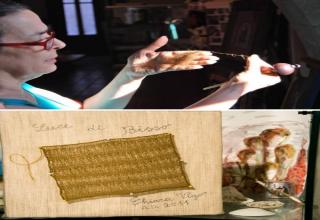




1 Comments